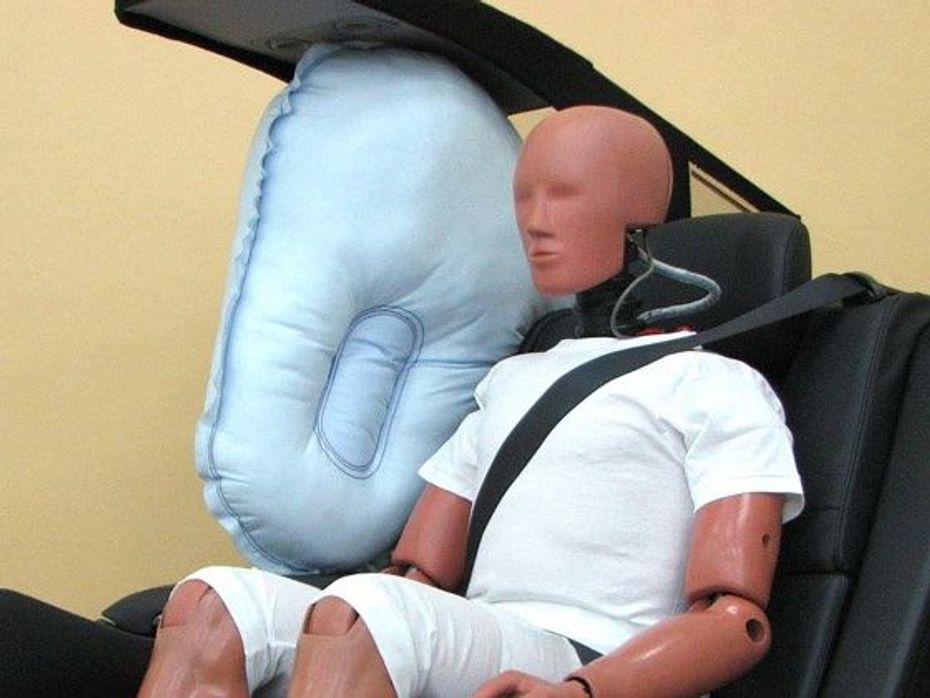
3 New Major Design Details Mahindra XUV 3XO Will Pack Over...
- Apr 12, 2024
- Views : 9623


Airbags work on the principle of motion. When a car is moving it gains momentum and so does everything in the car like the seats and passengers. If the car crashes that momentum is lost suddenly while the passenger has still not lost his/her momentum. An airbag tries to slow the passenger down to the speed of zero kph with as little damage as possible. The biggest constraint for airbags is that they are supposed to slow the passenger down rather than bring him/her to an abrupt halt. Considering that there is a gap between the passenger and the dashboard from where the airbag is deployed the timing and force applied to deploy and inflate an airbag is crucial to passenger safety.
There are 3 elements in an airbag system
1. Bag: The airbag is made of thin nylon fabric and can be stored in the steering wheel, dashboard and seats or doors.
2. Sensor: There is a sensor which detects the speed of the crash and if the speed is high enough it flips a mechanical switch which deploys the airbag.
3. Inflation system: There is a solid propellant which ignites extremely rapidly to create a large volume of nitrogen gas to inflate the airbag. The bag then bursts out of its storage area (at speeds up to 322kph) and the gas quickly dissipates through tiny holes in the airbag (reducing its pressure) to give the passenger as much of a cushioning effect as possible.

The airbag is a safety feature which goes side by side with a seatbelt. The seatbelt has to be worn at all times. The airbag in essence cushions passengers from slamming into the dashboard, steering or doors in the event of a crash, thereby reducing injury to the passenger. Also, the surface area that a passenger comes in contact with on an airbag is much higher than say hitting the dashboard, as a result risk of injury is less.
Do’s with Airbags:
1. Always wear a seatbelt. If an airbag deploys and the passenger is not wearing a seatbelt, the impact of hitting the airbag can result in serious injury or even death.
2. Make sure both front seats are atleast 10 inches away from the airbag cover.
Don’ts with Airbags:
• No kids under 12 in the front seats: This is a rule whether you have airbags or not. In the event of a child sitting in the front seat and airbags deploying, the impact can crack the child’s neck.
• Don’t fix deployed airbags: Some workshops claim to fix your deployed airbags back into the dash. This is not recommended as a used airbag usually results in the manufacturer having to replace the entire system, which includes the dashboard and steering wheel.
• Infants and children should never sit on a rear facing forward seat in the front of an airbag.

3 New Major Design Details Mahindra XUV 3XO Will Pack Over...

Tata Curvv: A Much Clearer Look At Its Interior Ahead Of Its Unveiling

Citroen Basalt vs Tata Curvv: Exterior Design Compared

10 New Features Expected In The Upcoming 2024 Mahindra XUV 3XO...

The Fronx Has Been Rebadged! Meet The Toyota Urban Cruiser Taisor,...

Here’s How Fuel Efficient The 2024 Maruti Suzuki Swift Sold In...

MG Hector And Hector Plus Blackstorm Edition Launched At Rs 21.25...

Mahindra XUV300 Facelift Teased, Gets A New Name

Citroen Basalt Vision, Its SUV Coupe For India, Revealed
India's largest automotive community